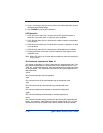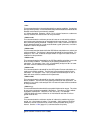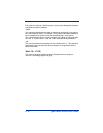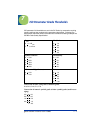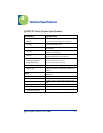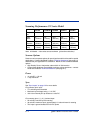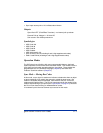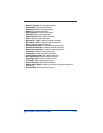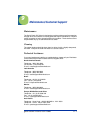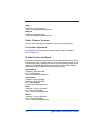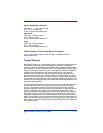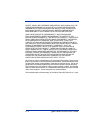
8 - 4 Quick Check® SV Series User’s Guide
Note: When in this sync mode, the sync input is a background application. The
SV Series will scan, analyze and report on bar codes as they pass
through the beam in this mode, regardless if a sync signal is sensed. The
presence of a sync signal allows the number of codes expected
(programmed) during the sync period to be used for a No Read condition.
The absence of a sync signal results in operation similar to the Free Scan
Operation described later.
Sync Mode – Stationary Bar Codes
In this mode, a bar code(s) are placed in the beam and held in a known position.
A sync input commands the SV Series to turn on the laser beam, perform a
programmable number of scans, report the analyses and turn off the laser beam.
A ~SA communication sync command is the most common sync source in this
mode.
Note: The SV Series must be programmed for Picket Fence travel orientation in
this mode if the bar codes are stationary when being scanned.
No Sync – Free Scan Operation
In this mode, a sync signal is not used and the SV unit scans and analyzes bar
codes at random as they pass through the laser beam. As stated in the Sync
Input section, this mode is not recommended because it cannot report on missing
or undetectable bar codes that can be caused by printer or other system
component failures. This mode is most acceptable when the SV Series is used
as a bar code decoder only.
It is recommended to use serial communications to a host in this mode for the
host to determine missing codes.
If this mode is used, the SV Series can still detect many print errors because of
its partial decode analysis capability. This algorithm can detect a bar code start
or stop character and two adjacent characters. This part of a code is usually
present in most print failure situations.
For maximum reliability for partial decode analysis, the bar code(s) being
analyzed must be present in the laser beam for 10 scans (example: 100
milliseconds for SV units with 100 scans/analyses per second performance). To
calculate bar code travel speed in this mode, see "Bar Code Travel Speed
Considerations" on page 5-3. Calculate the maximum speed for the application
per those instructions and then divide the speed by two for this application.
Parameters Analyzed
For each bar code scanned and analyzed, the SV Series performs practically all
the ISO, traditional and laser based verification methods documented in industry
specifications. All analysis parameters for these methods are reported via serial
communications (see "Serial Port Transmission Format" on page 3-1) and most
of the parameters can be used in any combination to activate the five ports. The
analysis parameters performed are listed below in the same order of the
standard transmission format as applicable.



